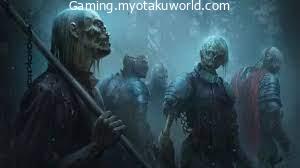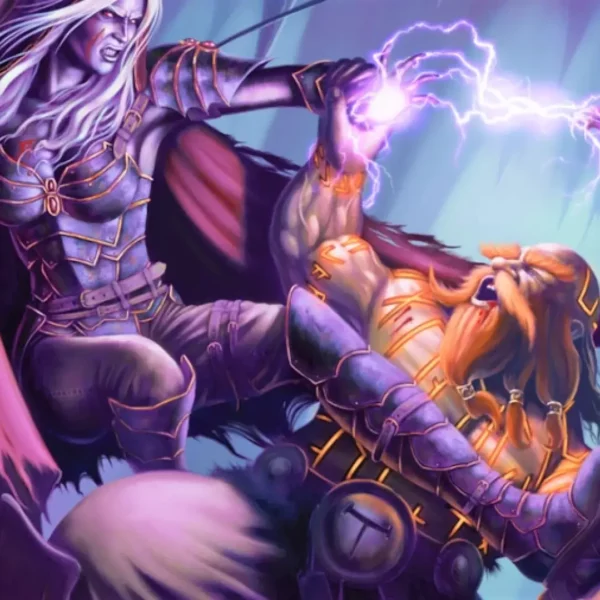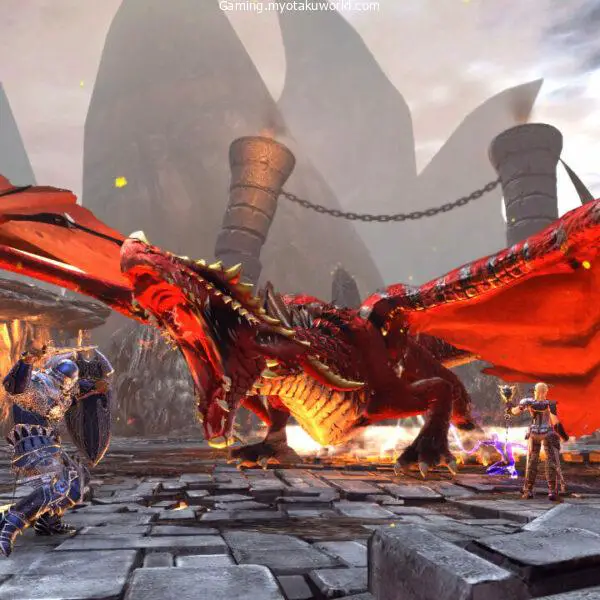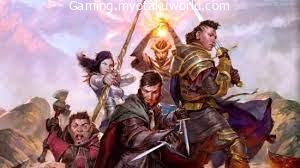If your group is scurrying through a cemetery in the night, battling the tower of the necromancer, or fighting off an undead invasion they will encounter zombies.
These well-known creatures are likely to shuffle and moan toward your DnD-themed party and are an extremely difficult task to take down.
Of course, watching creatures scream and move around your guests gets boring after some time So how can you keep zombies new within the heads of characters as well as players playing with them?
Zombies have a few tricks in their sleeves for the undead and there are some methods to make encounters more enjoyable with the creatures. Find out more in our complete Zombie 5e Guide.
What are Zombies?
The shuffle, never stopping foot soldiers of each necromantic army in 5e or fantasy The zombies are undead who have come back from the dead.
The majority of zombies are human and are dressed in their clothes when they passed away, and the wounds they suffered remain visible on their yellowed and bloated corpses.
They are emitted and activated by dark magic whether intentionally or after dark magic has soaked the area in which they were.
When they awake they either obey the instructions of a master or sit in the area to find something to kill or attack any living creature after they have been observed.
They do not require water, food, or air. They also do not require sleep, making them difficult to defeat by attrition. The best way to take down zombies is to do it with the speed of their movement, tricks, or fighting.
Zombies aren’t particularly intelligent they are not very smart, and unless ordered otherwise, they will follow the fastest route to get to their target.
This means that they’ll fall out of windows, walk through dangerous terrain and then barrel through obstacles until they get to their intended target.
How do Zombies work in 5e?
The zombies in 5e can be described as moderate undead monsters. They move forward toward the party without regard to strategy and security.
They fight in swarms due to their class’s 8 armor, and an average HP amount of 22. They aren’t an issue to the smallest level player.
Their most powerful stat is the constitution, which is symbolized by the trait of Undead fortitude.
Based on the block that defines their stats, their trait accomplishes what it says If the damage causes the zombie to drop to 0 hit point.
It has to make a Constitution saving throw, with 5 DC plus the amount of damage in the event of damage that is radiant or an extremely critical hit. When the save is successful the zombie will drop by 1 point.
If, for instance, a wizard kills the zombie using the use of a spell that deals 10, the creature will require a DC 15 saving roll.
If they succeed, they won’t die, but they drop to zero HP instead. They can continue fighting for a second time.
Zombies don’t have weapons and instead, slam you using their hands, perhaps to slap you into submission.
If there are a lot of zombies in the area, they could try to grab you by the throat and knock you with the force of their number, particularly within a closed space.

The Advantages of Zombies
There’s a reason that zombies are in every undead army and that’s why every necromancer is surrounded by a handful of zombies.
Zombies are simple to control and manage by the forces of darkness and so long as you give them basic commands that they obey according to the rules. The major benefit of zombies is twofold. Their number, and also their large HP pool.
22 hitpoints, on average, are pretty impressive for a mindless, walking corpse. Due because of their low CR 4 players of adventuring heroes will battle a lot to make the fight fair.
While zombies don’t have intrinsic advantages when they work with other creatures, however, their hitpoint pools as well as the Undead Fortitude attribute make them quite strong.
While they’re not going to take down the party in the first place unless some dice rolls that aren’t good occur or the group was slashed by blood due to an earlier encounter and they’ll make the party invest in slot machines, healing items, and other items that could have been used against stronger enemies.
The more resources your party burns up fighting zombies, the better it will become for the BBEG when the actual battle begins.
The Disadvantages of Zombies
If you think of zombies as the fleshy tank that absorbs damage and tanks, then you are right about their purpose. Two weaknesses that zombies suffer from are their inability to think and their speed.
They travel at a speed of 20 feet which is smaller than the speed of the majority of adventures.
If the zombies aren’t able to get the players encircled in a tight area that allows mobility the players can move in around them.
Furthermore, their wisdom and intelligence are not good which means they’ll suffer against spellcasters.
A skilled wizard can make use of every spell they want without regard to success in saving throws for the opponent.
How to make Zombies fun?
They’re slow, swaying and then they beat on you until you’re dead. While they’re at it, it’s quite entertaining.
However, if zombies and undead are the main adversaries of your game and your group the level them by a significant amount it won’t make the party use up its resources.
Although you could throw many more of them at the wall, it’s much more fun to teach new rules and abilities. different rules and capabilities to create a fun environment for zombies!
Mix them with other Undead
First of all, any necromancer who is worthy of his reputation will not be awash with zombies. They’ll also have undead.
One of the most effective combinations that have provided players with a run for cash is the combo of skeleton and zombie.
Skeletons are hardy and have low HP, and are more susceptible to the damage of bludgeoning attacks. They’re not as durable as zombies in a straight-up fight however they do offer advantages.
They’re fast and can be attacked from a distance using short bows, and they have slightly more in HP than zombies. Combining them can be quite interesting.
The zombies can enter and hold the party down with their massive bodies, while the skeletons can whack the party with archers.
It may not seem like a grueling battle however these two undead enemies can easily make a dent in an ideal dungeon run.
Other undead could be combined with zombies too and give the party something fun to fight ghosts or ghouls are working in the background. Make up your ideas and throw several different combinations at your event, and watch what happens!
Zombie Variants
It’s easy to make your zombie exciting by introducing a few variations. Incorporate some capabilities and you can mix and match different zombies that will leave your players shaking. Perhaps these variations even depend on how the zombies died in real life.
For instance, people who have been who were poisoned to death have poison in them, referred to in the form of Zombie Bloaters.
The zombies can explode with poisonous clouds after death, rather than relying on undead fortitude If you fail to achieve a dex save to stay clear of poison, you’ll get poisoned.
Zombie wizards are infected by darkness that gives them their life and lets them do necrotic damage when they hit. Maybe they can use one-time use of an ability or spell, or another magical power.
Some zombies are aware of how to utilize the weapons they used in the battle against their enemies.
They could be less effective in the battle rolls since they’re armed using a body that is broken however they’re still an armed threat.
It is possible that a graveyard filled with heroes was disturbed. The heroes who died with magical armor and weapons will have to be killed. The zombies will have greater AC and may be more difficult to defeat.
There’s a possibility of zombie runners with less health but can run 40 feet instead of the usual 20 feet. This is something that could scare your heroes. They’ll also ensure that they don’t attempt to slay zombies using melee attacks.
Zombiefy Other Creatures
Zombies don’t need to be humans. Include some fun in the mix by including zombie halflings, dwarfs, elves as well as different races.
They could be statistically identical to normal zombies, however, an appearance change is always fun.
Zombie creatures can be enjoyable to fight too since sometimes they’re not only burial in a grave or a graveyard.
You could also find zombie creatures, like minotaurs or bugbears as well as zombie dragons.
These creatures are similar in terms of statistics to their counterparts in the wild, however, the zombies lack intelligence or wisdom, and also be immune to poisons is.
In other circumstances, the battle will take place as usual. Make some fun creating zombie versions of the traditional battles and understand that these creatures are Undead and do not feel pain.
There’s nothing quite like fighting the zombie bugbear, cutting the arm off with a decisive strike, only to watch it relentlessly come at you.
It will continue to fight you with its other arm and it’s a bit scary to the adventurer on opposite side!
Zombie FAQ

Do Zombies have weaknesses?
While the majority of horror movies advise that we should aim for the head when fighting zombies, the official 5e statblock does not show any weaknesses or weaknesses to zombies.
However, there’s no reason not to make a few vulnerabilities for the zombies. It’s possible to make your zombies susceptible to silver, fire holy magic, specific zombie-slaying equipment.
Maybe being killed by one of these methods eliminates your Undead Fortitude trait, while any other reason triggers Undead Fortitude to kick in immediately, without needing the saving throw for zombies. Enjoy yourself and experiment with ways you can make your zombies unique.
You can even make this work with other Undead also, perhaps applying the same rules, letting them save to prevent death. If they are successful, they’ll be able to get through with only one HP and fight on.
It might allow holy characters like such as the the cleric as well as the paladin the chance to show off their undead-slaying skills.
Additionally, your group could make their loadouts more efficient to take down the undead and keep them from regaining their power once more.
Do Zombies carry diseases?
Yes In 5e, zombies do not have a bite attack and they don’t transform you into zombies if their attacks come into contact with or penetrate the skin.
There’s nothing that suggests that your zombies won’t have the bite attack to deal with necrotic injuries or have other abilities that accomplish the same effect.
It’s crucial that if you decide to go this way your team will not be able to repair the injury immediately without the power of magic.
Even so, the healing potion or spell could heal physical wounds but it could leave necrotic and decaying energy in the body.
The healing process is best done by a doctor at a local church. Even if the drug-related damage is not cosmetic, however, you could still set it up as being harmful and embarrassing for the patient.
Necrotic damage is essentially the opposite of radiant magic. When a healing spell is able to knit your skin back to its original shape, necrotic damage spells can split it and then affect the area affected or even cover it with burns or scars.
It’s a great way to enjoy yourself with it and declare that only higher-level spells are able to heal the problem. This will reduce the likelihood of your group facing zombies who aren’t prepared!
Are Zombies mindless?
Although necromancers, lich, and other dark magic can give dead characters themselves and revive the dead they’ve been buried with, they don’t manage them.
The killing of a necromancer who has brought ten zombies back to life won’t stop the spell that ended the zombie its life. It’s self-contained magic that means they’ll remain alive.
Zombies are controlled by the person who brought them up, but they’re unable to do anything beyond advancing and strike at an opponent.









